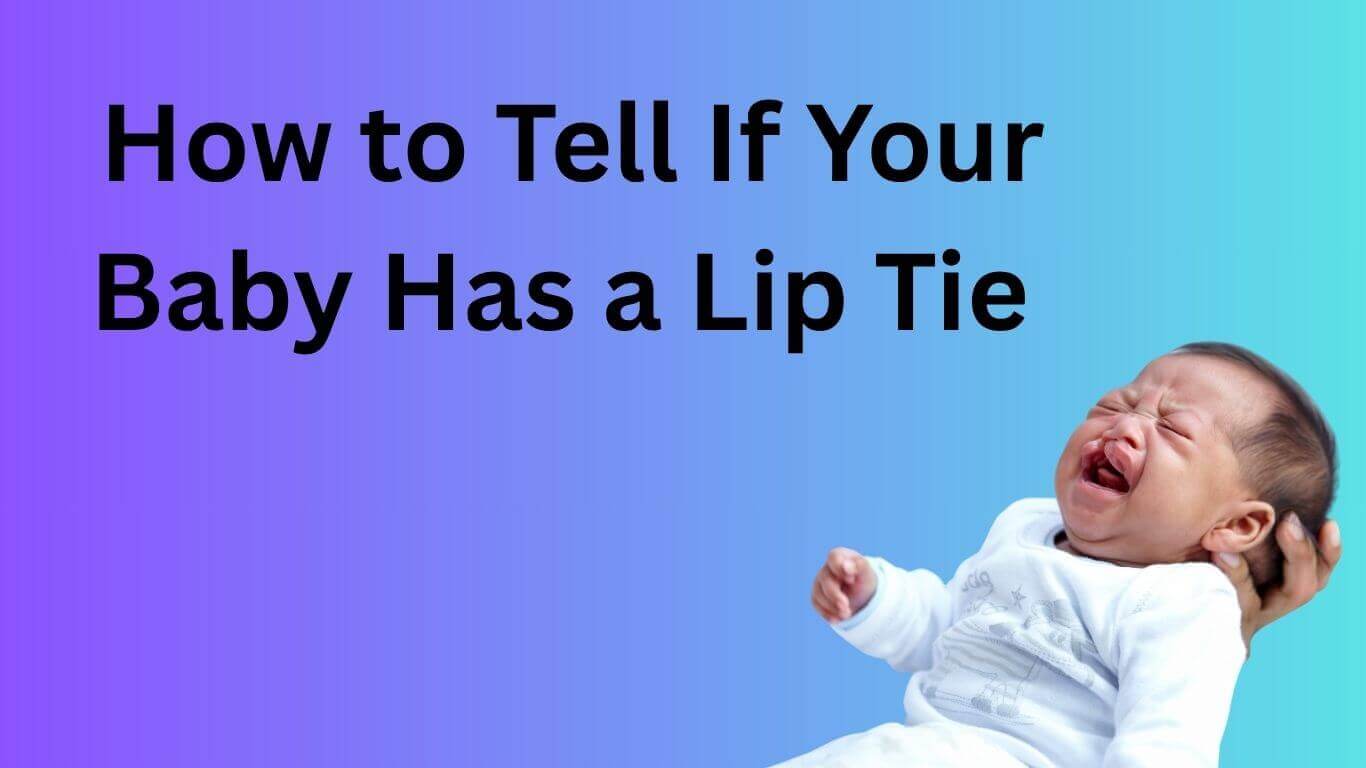Feeding your baby shouldn’t feel this hard. I remember when my baby kept slipping off the breast and fussing non-stop. At first, I thought we just needed more practice. But after weeks of sore nipples and a frustrated baby, I started to wonder, “Could this be a lip tie?” If you’re asking the same thing, let’s review the signs. I’ll help you determine if your baby has a lip tie and what to do next.
How to Tell If Your Baby Has a Lip Tie
If you’re a parent struggling with feeding challenges, you might be wondering, *“Does my baby have a lip tie?”* Trust me, you’re not alone. I’ve been there, and I know how overwhelming it can feel. Let’s break it down together in a simple, relatable way so you can figure out what’s going on and take the next steps with confidence.
Quick Signs Your Baby May Have a Lip Tie
Lip ties are hard to spot, but they often cause feeding issues. Look for these signs:
- Difficulty Latching: Your baby keeps letting go, making feedings tiring.
- Clicking Sounds While Feeding: This happens when they lose suction.
- Gas and Reflux: Swallowing too much air can make them fussy.
- Milk Leaking: If they can’t seal well, milk dribbles out.
- Slow Weight Gain: Trouble feeding may mean they aren’t getting enough milk.
Moms may also feel pain. Sore nipples, clogged ducts, or low milk supply can be signs of a lip tie. If feeding feels more complicated than it should, it’s worth checking.
How Do You Test for Lip Ties at Home?
Wondering if your baby has a lip tie? Try this simple test now:
- Lift your baby’s upper lip. Does it stretch easily, or does it feel tight?
- Look under the lip. Is there a thick or short piece of tissue connecting it to the gums?
- Try to curl the lip outward. If it barely moves, it might be restricted.
- Check for feeding struggles. If your baby has trouble latching, leaks milk, or seems fussy, a lip tie could be the cause.
This isn’t a diagnosis, but if the lip feels tight and feeding is hard, talk to a professional.
When to See a Doctor About a Lip Tie
Not all lip ties need treatment, but if feeding feels like a daily battle, getting a professional opinion is worth it. You can see:
A pediatric dentist (they specialize in oral ties).
A pediatrician (they can assess if treatment is needed).
A lactation consultant (they’ll check if the tie is affecting breastfeeding).
They’ll do a functional assessment, which means they won’t just look at the lip tie but also check how it’s affecting feeding.
Will a Lip Tie Correct Itself?
It depends on how severe the lip tie is. Mild lip ties may loosen over time and cause no problems. Moderate to severe lip ties can affect feeding, speech, or dental health later. If your baby is struggling now, waiting may not be the best choice. Breastfeeding should not be painful or ineffective. If it is, getting help sooner is a good idea.
At What Age Should a Lip Tie Be Corrected?
If your baby is under 6 months old, a lip tie release (frenectomy) is quick and straightforward and causes little discomfort. If it affects speech or teeth later, some parents choose treatment between 1 and 3 years old.
Here’s what matters most: Function, not just appearance. You don’t need to rush if your baby eats well and is happy. But if feeding is a daily struggle, getting an evaluation early can save stress.
My Personal Insight
I remember feeling so unsure when my baby struggled to latch. It wasn’t until a lactation consultant pointed out the lip tie that everything clicked. Getting it corrected made a world of difference for both of us. If you’re in a similar situation, trust your instincts and seek support.
Final Thoughts
If you’ve been wondering how to tell if the baby has a lip tie, I hope this helps! Feeding should be a bonding experience, not a daily frustration. If something feels off, trust your instincts and reach out for help. You’re not alone—many parents go through the same thing. And remember, the goal is a happy, well-fed baby (and a stress-free you!).




